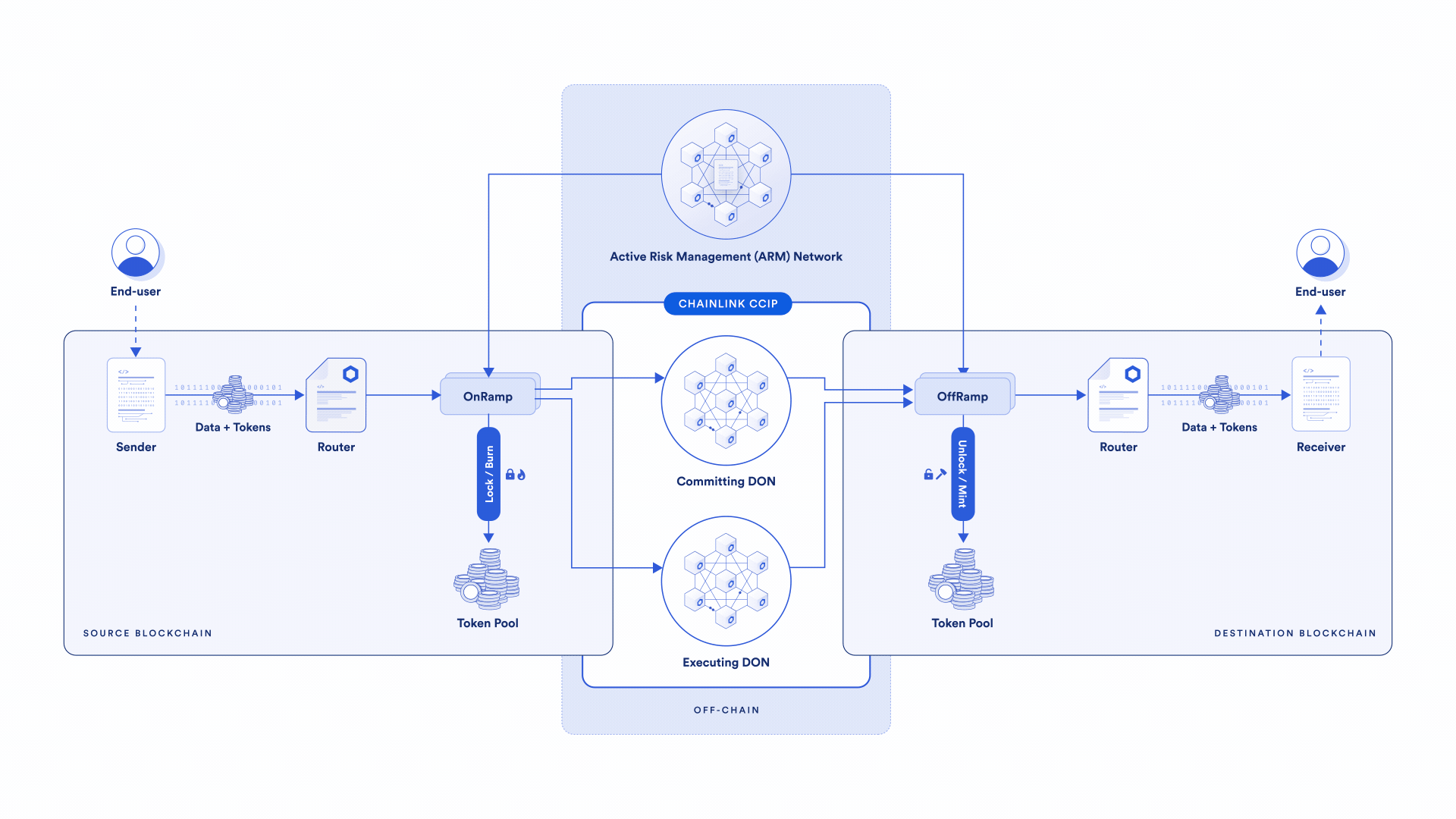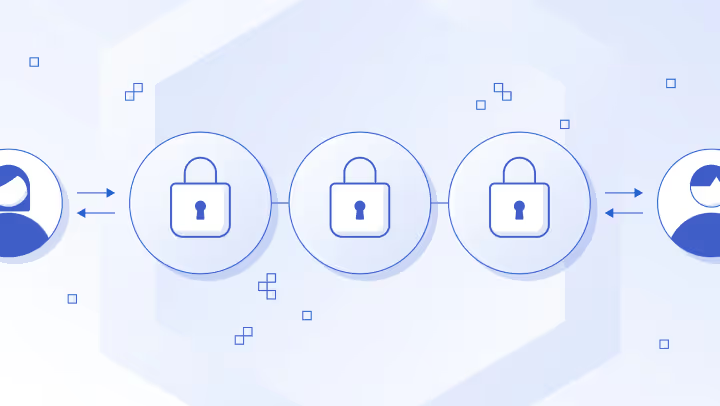What Is Tokenization?
Tokenization is the process of creating a digital representation of an asset by issuing a blockchain-based token.
Tokenization is transforming global markets as banks, asset managers, and financial market infrastructures extend their underlying financial infrastructure with blockchain and distributed ledger technologies. With the potential to encompass virtually any asset, tokenization is one of the most ambitious blockchain use cases.
According to a survey conducted by BNY Mellon and Celent, 97% of institutional investors agree that “tokenization will revolutionize asset management.” In capital markets, tokenization opens up the creation of entirely new financial markets and instruments since assets that have historically been siloed across disconnected environments can exist within a common settlement layer.
In this post, we discuss tokenization, how it works, and how the Chainlink platform can provide enhanced utility and liquidity for the tokenized asset economy.
How Tokenization Works
Tokenization involves creating a digital representation of an asset—such as cash, commodities, debt, financial instruments, and real estate—by issuing a blockchain token. This tokenized asset can then gain additional utility and tap into a global ecosystem of financial services on public and private blockchains.
It’s important to note that tokenization isn’t only beneficial for the finance industry—tokenization use cases are being adopted in global trade, insurance, art, entertainment, and more.
For a detailed walkthrough of the tokenization process, read How To Tokenize An Asset.
The Benefits of Tokenization
Real-Time Settlement
Smart contracts can ensure trades are settled instantly and atomically, reducing counterparty risks and allowing for 24/7 trading.
Unlike traditional systems where settlements may take days (e.g., T+2), blockchain allows for immediate transaction execution (T+0). This not only increases market efficiency and accessibility but also introduces significant cost savings and performance enhancements through decentralized financial market infrastructure (dFMI) such as blockchains and oracles.
Liquidity
By establishing a universal standard for execution and settlement via blockchains, tokenization significantly enhances liquidity and capital efficiency, accelerates capital velocity, and unlocks globally accessible liquidity pools. Tokenization also enhances the liquidity of traditionally illiquid asset classes, such as private equity, by making them available to a wider market onchain. They can also be seamlessly integrated into the existing operations of financial institutions.
Reduced Costs
Tokenization significantly lowers operational costs in financial markets by streamlining processes and eliminating the need for multiple intermediaries. By deploying smart contracts on blockchains, tokenization enables automated transactions and compliance, reducing the administrative burden and associated costs on financial institutions.
This automation also decreases the costs tied to transaction processing and asset management, as the transparent nature of blockchain can increase the efficiency of audits and financial reporting.
Broadened Access
Tokenization broadens the types of assets available to investors, enabling them to participate in asset classes that were previously inaccessible or challenging to enter. By lowering the entry cost for participants, tokenization not only makes financial systems more efficient but also more accessible.
Furthermore, tokenization facilitates the fractional ownership of high-value items. By allowing smaller portions of assets like real estate—which are typically difficult to fractionalize in conventional market settings—to be owned and traded at minimal costs, tokenization can significantly expand the potential investor base.
Enhanced Transparency
Tokenization boosts transparency across financial ecosystems as each transaction is recorded on a decentralized ledger accessible to all participants, ensuring that ownership and transaction histories are permanently transparent and easily verifiable.
This level of transparency helps reduce market risks, as every change in ownership or asset status is visible to all stakeholders. The immutable nature of blockchain ensures that once information is added, it cannot be altered, providing a clear trail of asset movement and ownership.
Tokenization Examples
Stablecoins
Stablecoins provide a stable digital currency pegged to less volatile assets like fiat currencies or gold. These tokens maintain a steady value against their underlying assets, enabling everyday use in transactions. By leveraging blockchains’ transparency and security, stablecoins offer an efficient and scalable alternative, facilitating faster and cheaper transfers and access to global markets without the need for intermediary financial institutions.
Debt
Tokenizing debt transforms traditional debt instruments into tradable onchain tokens, simplifying processes like issuance, settlement, and trading. This introduces enhanced liquidity, making it easier for potential investors to buy and sell debt securities. Debt tokenization also allows for fractional ownership of debt instruments, making these markets accessible to a wider array of accredited investors.
Real Estate
Real estate tokenization enables high-value property ownership to be fractionalized into smaller portions via digital tokens representing a share of property ownership. This approach not only democratizes access to the real estate market but also enhances liquidity, allowing accredited investors to enter and exit positions without the traditional barriers or time constraints of traditional real estate transactions.
Commodities
Tokenizing commodities like oil, gold, or agricultural products brings ownership into onchain tokens, providing a more liquid and accessible market for these assets. This process facilitates easier and more transparent transactions, allowing for real-time pricing and reduced overhead costs associated with storage and transportation.
Accredited investors can directly purchase fractional interests in physical commodities without the need for physical storage, while suppliers can access a global market more efficiently.
Artwork and Collectibles
The tokenization of artwork and collectibles creates digital ownership records for physical pieces, ensuring the authenticity and provenance of these items while making them accessible to a global audience. Artwork tokenization allows artists and collectors to reach broader markets and enables fractional ownership of high-value items, lowering entry barriers for new market participants. Furthermore, it provides a secure and transparent way to track ownership history, combat forgery, and simplify the transfer of ownership without compromising the physical asset’s security.
Music
Tokenization in the music industry allows for the digital representation of music rights and royalties, transforming how artists and rights holders manage and monetize their work. By tokenizing music tracks, albums, or royalties, artists gain greater control over their creations, enabling direct revenue streams from sales, licensing, and even secondary market transactions without the need for traditional music industry intermediaries.
This approach enhances transparency in royalty distribution, ensuring that payments are more accurately allocated to artists and contributors. Furthermore, it opens up novel avenues for fan engagement, as fans can support their favorite artists by purchasing tokens linked to musical works or future earnings.
Gaming
The tokenization of in-game assets involves tokenizing digital assets used in GameFi projects or metaverses, such as skins, weapons, or in-game currencies. This gives players more control of their assets, helps create more open marketplaces in-game, aligns incentives between different participant groups, and enables more cross-platform compatibility between different gaming ecosystems.
Related Solutions
Issuing tokens is only the beginning. Once a tokenized asset is issued onchain, it requires a variety of additional services to achieve a high level of programmability and a robust secondary market. The following are a few examples of how the Chainlink platform’s essential infrastructure can enhance the onchain economy.
Chainlink CCIP
Tokenized assets need secure cross-chain interoperability to access users and liquidity across both public and private blockchains. Chainlink Cross-Chain Interoperability Protocol (CCIP) is the most secure and reliable blockchain interoperability protocol in the industry. CCIP serves as both a blockchain abstraction layer for interacting with tokenized assets across blockchains directly from an existing backend system via a single middleware integration, and as a cross-chain messaging protocol for transferring data and tokens across public and private blockchains.
Major financial institutions and financial infrastructure providers are already collaborating with Chainlink on how to use CCIP to unlock the potential of blockchain technology and tokenized assets, including Swift, DTCC, and ANZ Bank.
Chainlink Proof of Reserve
Since tokenized assets are onchain representations of an asset or basket of assets existing offchain, information about the offchain or cross-chain reserves is needed to make them useful in a broader setting. As a result, the ability to directly verify certain information about the reserves onchain is critical for tokenized assets to enhance the security and transparency of tokenized assets.
Chainlink Proof of Reserve enables the autonomous, reliable, and timely verification of offchain or cross-chain reserves backing tokenized assets. Proof of Reserve utilizes oracle networks that attest to the cross-chain or offchain reserves backing tokenized assets, resulting in a transparent onchain verification trail for consumers, asset issuers, and other smart contract-based applications. Chainlink Proof of Reserve can source onchain data, custodian APIs, or third-party offchain attestations.
Chainlink Data Services
Tokenized assets require connection to a variety of additional real-world datasets. Without external data, tokenized assets remain a mere onchain representation of an offchain asset with no additional capability or utility. Not only does offchain data need to be relayed onchain, but onchain data needs to be relayed back offchain to keep offchain systems in sync with blockchain networks.
Chainlink is the industry standard for market data in DeFi, having securely and reliably enabled over $12 trillion in transaction value for onchain applications. Chainlink Data Feeds utilize decentralized oracle networks made up of reputable node operators to aggregate data from high-quality sources and deliver it onchain without any single point of failure. Chainlink Data Streams is a low-latency oracle solution that enables high-throughput DeFi markets backed by transparent and decentralized infrastructure.
Tokenization Resources
Tokenization is the latest major transformation of financial infrastructure, following the digitalization of financial instruments in the second half of the 20th century. Now is the time for financial institutions to position themselves at the forefront of this shift and capture a major market opportunity.
If you’re interested in the tokenization megatrend, explore the following resources:
- Beyond Token Issuance: How Interoperability and Real-World Data Unlock the True Value of Tokenized Assets
- Real-World Assets (RWAs) Explained
- Tokenized Real-World Assets (RWAs): Scaling Onchain Finance to a Global Level
- NFTs for Real-World Assets
- Cross-Chain Tokenized Assets
Looking to understand the tokenization opportunity? This industry report provides a comprehensive overview of the growing tokenization market, with contributions from BCG, 21Shares, Paxos, Backed, and Chainlink. Access now.












